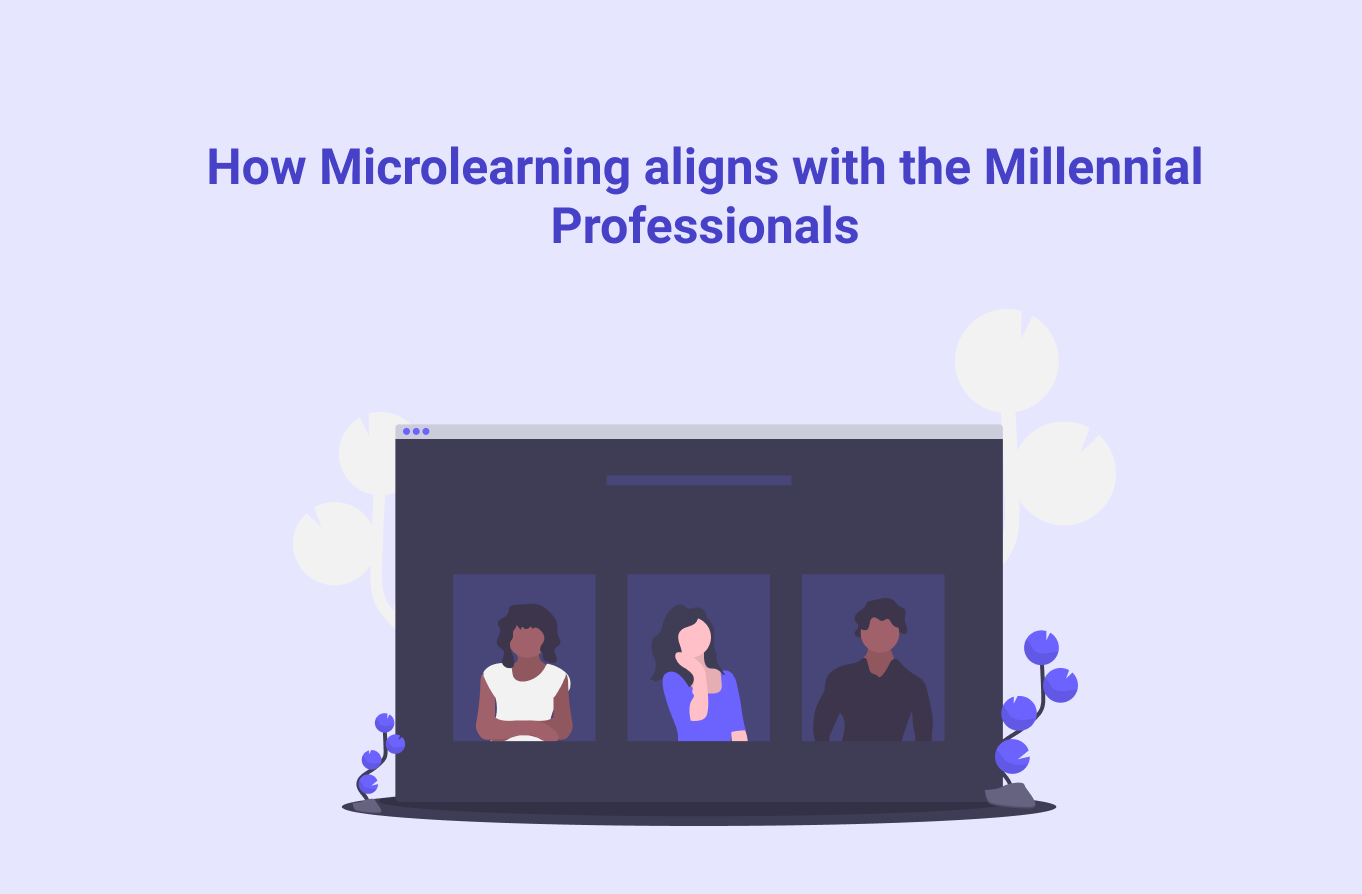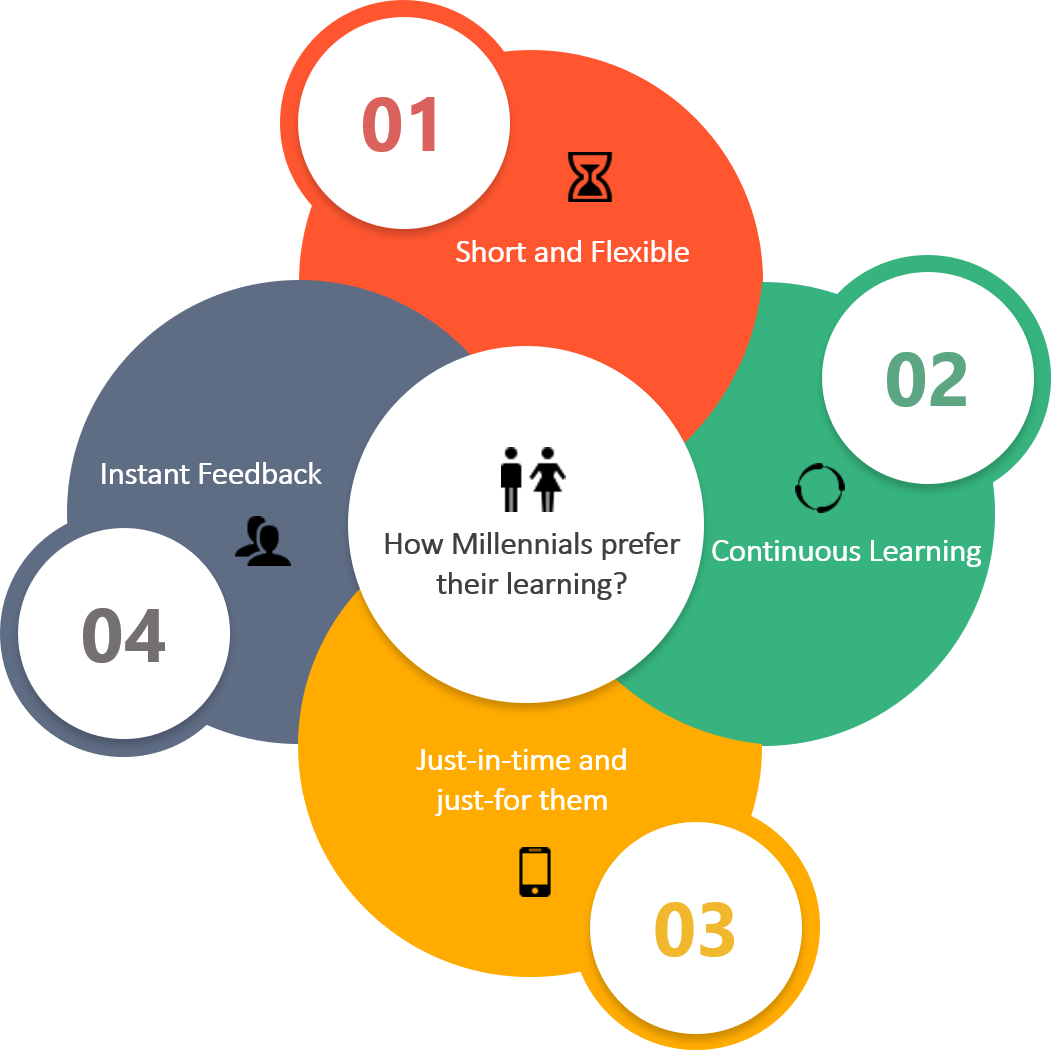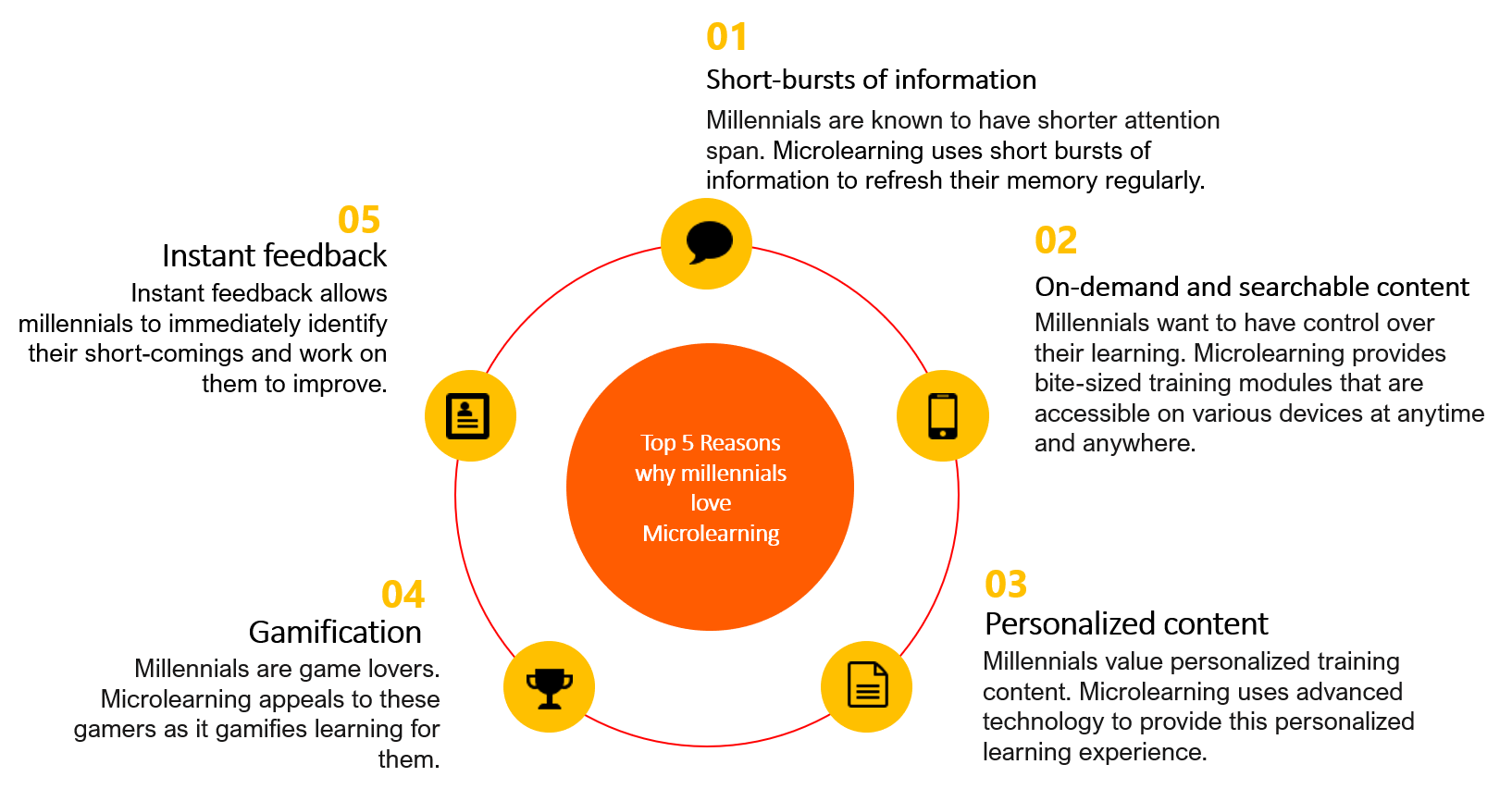Microlearning- An effective way to train millennials
4 minutes read

Millennials: The new workforce
If you take a close look at the workforce in your organization, you will observe that more than half of your employees are millennials. According to Wikipedia, millennials are the ones who are born between the early ’80s and 2000s. They are also known as generation y or gen y. Various studies predict that by 2025, 75% of the global workforce will be comprised of millennials.
Millennials come into the workplace with a different learning style, skill sets, and expectations. Relying solely on traditional training methods is not very effective in training and developing this generation. This calls for a shift in your training strategies to the ones that suit the millennials.
Learning style of millennials:
They like their learning to be short and flexible
They value continuous training/learning
They appreciate the information that is just-in-time and just-for-them
And yes they want to get instant feedback

Why microlearning fits in well with the millennial lifestyle?
The millennial generation is used to consuming information in smaller formats. For example, they use Twitter that delivers the information in 140-character tweets. And watch Facebook videos, the average duration of which is just 2-minutes. It is not surprising that they do not appreciate information overload. In fact, according to the PWC study, only 6% of Millennials value classroom training. And only 5% see value in e-learning.
So, micro-learning is a desirable solution to meet the learning needs of this generation. Let us now explore the top 5 reasons why millennials love microlearning:

1. Short-bursts of information
Millennials are known to have a shorter attention span. In fact, Microsoft’s survey says that the average attention span of humans is below 10 seconds. Pushing loads of information on to them only creates information/cognitive overload.
Microlearning comes to the rescue. Microlearning uses short bursts of information to train the millennial workforce. It splits a lengthy training topic into various sub-topics or micro-nuggets. It sends these micro-nuggets to the learners regularly as microlearning feeds. This kind of short content allows the millennial learners to easily absorb, retain and recall crucial information.
2. On-demand and searchable content
Millennials prefer to have control over their own learning. They want the training content to be immediately available to them at the point-of-need. They want it to be as easily searchable as looking something up on google. Microlearning makes this a possibility. It’s bite-sized training modules are easily searchable and accessible across various devices. Also, it provides the flexibility to consume this information anywhere and at any time.
3. Personalized content
Statistics say that the app personalization technology has grown 332% from 2014–2015. This rising trend of app personalization clearly shows the shift among users to use only customized and personalized content. Especially millennials value learning that is to the point and customized for them. Microlearning helps in delivering this personalized learning experience.
Microlearning leverages latest technologies like AI and ML to provide a tailored learning experience for learners. It customizes the learning content according to each individual’s level of knowledge, role, interests etc.
4. Gamification
Millennials are game lovers. Also, a recent survey reports that 41% of millennials prefer to be recognized or rewarded every month for their work. Combining microlearning with gamification brings in the elements of fun and rewards to their training.
Gamify the microlearning by conducting regular quiz competitions among the employees. Recognize and reward the top performers in the competition. Millennials definitely enjoy competing and winning rewards, badges, points etc. It highly motivates them to learn and perform better in the upcoming competitions.
5. Instant feedback
Instant feedback allows the learners to know where exactly they went wrong and make efforts to improve. Millennials value this kind of feedback as it enables them to improve their performance quickly and grow as a professional.
Ensure that your microlearning modules allow you to provide instant feedback. Share your feedback with the learners after every microlearning assessment. It will be much more effective if you give both qualitative and quantitative feedback. While quantitative feedback is useful to give a score, qualitative feedback allows you to give clearly defined instances.
The future of workforces around the world is going to be millennials. This means that the organizations have to be prepared to accommodate, train and develop these new generation employees. Microlearning effectively caters to this new learning and working style of the millennials. It efficiently engages them and improves their job performance.
Want to know more about microlearning?
How to Convert a PowerPoint Presentation into Microlearning Content?
Microlearning as a supplement for LMS
Use Micro-Learning to Turbo-Charge your Sales Team
Looking for a platform to automate the process of delivering microlearning feeds to your learners?
Explore SmartWinnr’s SmartFeeds. SmartFeeds help you create microlearning feeds and deliver them to your learners through the SmartWinnr mobile app regularly. Your learners can then like and react to these feeds. This helps in increasing the engagement of the learners.
Interested to see it in action? Book a demo today!
Published on Thu Apr 18 2019
